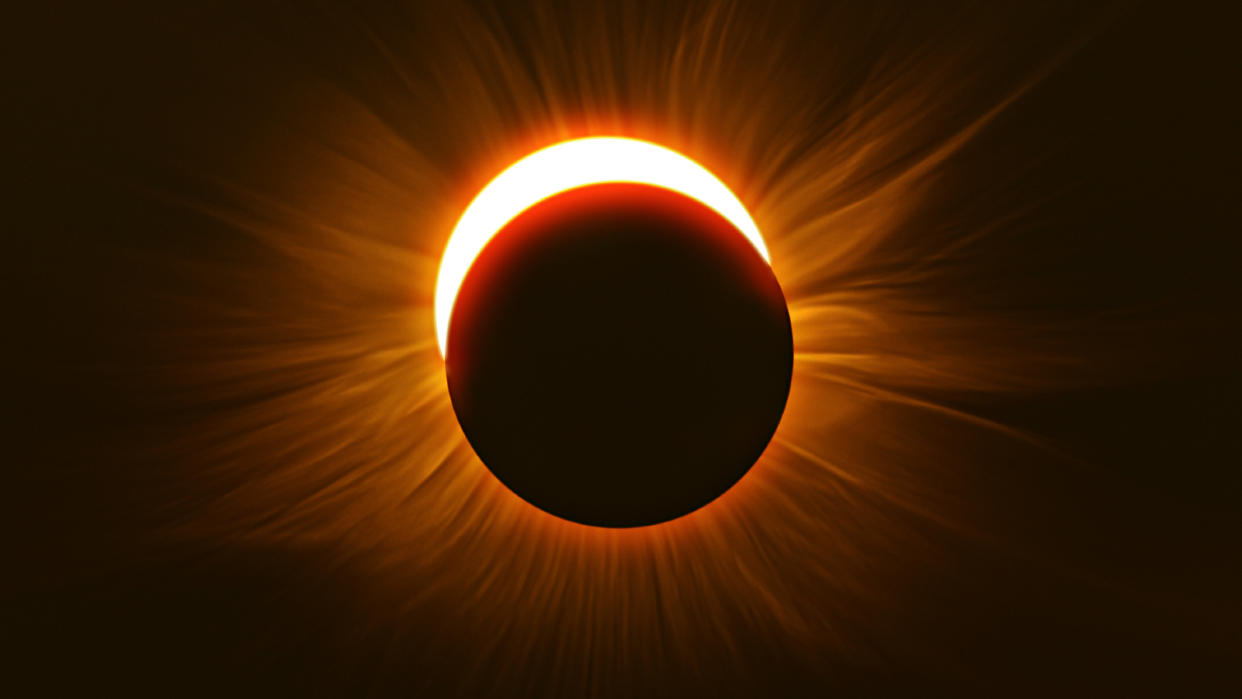Myth busted: Total solar eclipses don't release special, blinding radiation, NASA says

Today (April 8), a total solar eclipse will sweep across 15 U.S. states, plunging a 115-mile-wide (185 kilometers), 10,000-mile-long (16,000 km) path into sudden darkness as the moon's enormous shadow glides across the face of the sun.
It's a cosmic coin trick that has always evoked feelings of both awe and dread in skywatchers down on Earth, and eclipses have been interpreted throughout history as messages from gods, bad omens or heralds of imminent apocalypses.
In the present, scientists know a lot more about eclipses (and are even chasing today's eclipse down in jet planes) but that doesn't mean that all of humanity's fears around the celestial events have been assuaged.
Thankfully, many of these myths have already been debunked by NASA, including one popular claim that total solar eclipses produce especially harmful rays that can cause blindness.
Related: 2024 solar eclipse map: Where to see the eclipse on April 8
"During a total solar eclipse when the disk of the moon fully covers the sun, the brilliant corona emits only electromagnetic radiation, though sometimes with a greenish hue," NASA wrote in a blog post for the 2017 Great American Eclipse. The sun's corona — its hot, outer atmosphere — peeks out from around the moon during a total eclipse and will look spiky, like a hedgehog, due to this radiation.
"Scientists have studied this radiation for centuries," the post reads. "Being a million times fainter than the light from the sun itself, there is nothing in the coronal light that could cross 150 million kilometers of space, penetrate our dense atmosphere, and cause blindness."
This is true during totality, the only time it's safe to view the eclipse with bare eyes. But during partial phases of the eclipse, when the sun isn't yet covered up, staring at it can cause permanent damage to the retina. Rarely, this damage can cause blindness.
RELATED STORIES
—Total solar eclipse April 2024: The 10 biggest cities within the path of totality
—How to make a solar eclipse viewer to safely watch the total solar eclipse on April 8
NASA notes, since the sun's glare can cause this retinal damage, you should only look at the partial eclipse directly with certified glasses or indirectly with your own eclipse viewer.
Despite not producing any especially harmful light, total eclipses do have a remarkable, brief impact upon the areas they move through, causing temperatures to suddenly drop and clouds to halt and even dissipate in the sky.

